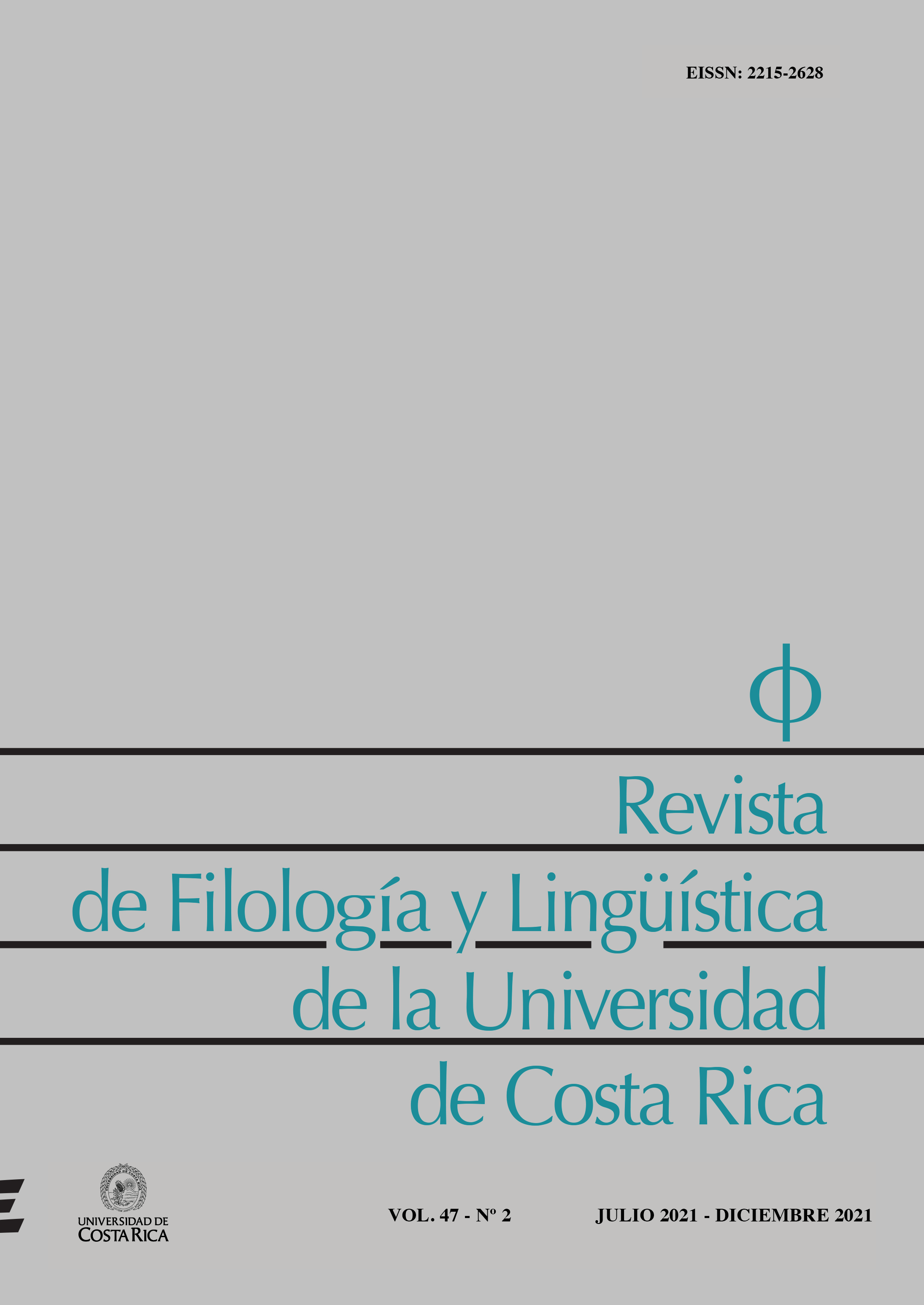Abstract
The purpose of this article is to study space/time in El Viaje Sedentario (1994) by Gonzalo Celorio, at the same time, to link these spatio-temporal manifestations as part of the debate on identity. For this purpose, literary geography was taken as a theoretical basis: Bajtín and Ottmar Etter's studies on the chronotope and literature in movement. The research proposes the analysis of the movements made by the protagonist throughout the text and the way in which the referents spatio-temporal are closely related to the process of constructing an identity. Finally, it is demonstrated that spaces described in El Viaje Sedentario (1994) are related to the increasing need to identify oneself within a group, for example, the architectural vestiges that are still preserved in Mexico City, and that represent the historical evolution and identity of a people. Thus, Mexico as a whole is visualized as the chronotope of the encounter where present and past converge and where layers of meaning and histories accumulate, from colonial times to the present.
References
Aínsa, F. (1986). Identidad cultural de Iberoamérica en su narrativa. Madrid: Gredos.
Aínsa, F. (2010). Discurso identitario y discurso literario en América Latina. Amérika, 1. doi: 10.4000/amerika.478
Bachelard, G. (2000). La poética del espacio. (E. de Champourcin, trad.). México: Fondo de Cultura Económica.
Bajtín, M. (1986). Problemas literarios y estéticos. La Habana: Editorial Arte y Literatura.
Beltrán, R. (2006). Tres lindas cubanas de Gonzalo Celorio. Revista de la Universidad de México, 29, 96-99.
Beltrán, R. (2014). Los raros: El metal y la escoria, de Gonzalo Celorio. Revista de la Universidad de México, 129, 92-93.
Celorio, G. (2014). El viaje sedentario. México: Tusquets.
Chanady, A. (1996). Nuestra América mestiza y la conceptualización de la especificidad latinoamericana. En F. Theodosíadis (Ed.), Alteridad ¿La (des)construcción del otro? Yo como objeto del sujeto que veo como objeto (pp. 83-104). Bogotá: Cooperativa Editorial Magisterio.
Cziesla, W. (1996). Metrópolis latinoamericanas como escenarios en la literatura. En M. Rall y D. Rall (Eds.), Letras comunicantes. Estudios de literatura comparada (pp. 219-248). México: Universidad Autónoma de México.
De Certeau, M. (2007). La invención de lo cotidiano. Relatos de espacio. México: Universidad Iberoamericana.
Ette, O. (2008). Literatura en movimiento: espacio y dinámica de una escritura transgresora de fronteras en Europa y América. Madrid: Consejo Superior de Investigaciones Científicas.
Krieger, P. (1998). México, ciudad de papel, de Gonzalo Celorio. Revista Reseñas Anales del Instituto de Investigaciones Estéticas, 20(72), 165-167.
Stavenhagen, R. (s. f.). La diversidad cultural en el desarrollo de las Américas: Los pueblos indígenas y los estados nacionales en Hispanoamérica. [doc]. Recuperado de http://www.oas.org/udse/documentos/stavenhagen.doc

